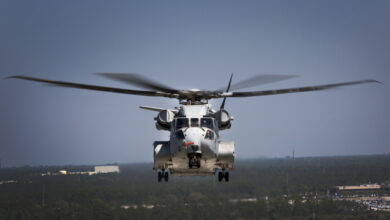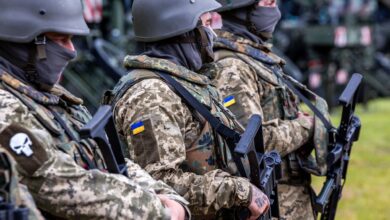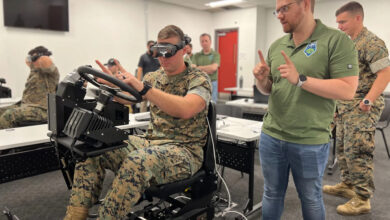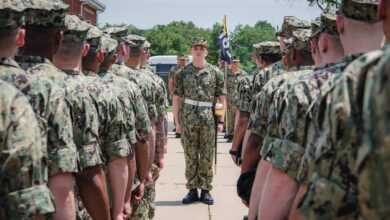Australian Navy Trains MH-60R Helicopter Deck Landing at Night
The Royal Australian Navy has conducted a night training operation with its MH-60 Romeo maritime helicopter aboard the HMAS Hobart in the North Pacific Ocean.
The drill was part of a regional presence deployment to hone Australian naval airborne operators’ skills and teamwork “on a pitching and rolling warship.”
Participants were tasked with a deck landing mission on the Hobart-class vessel during the training.
Pilots and operators were equipped with night vision goggles to cope with the night conditions.
“It was a very dark night with no moon and strong winds. It was extremely challenging,” Royal Australian Navy Pilot Lt. Rhiannon Thompson explained.
“You quickly start to see why it is so important for pilots to maintain and refine those fundamental skills.”
HMAS Hobart Deck Operation
As they approached the HMAS Hobart on the MH-60R, Thompson and aviation warfare officer Sub-Lt. Alexander McLauchlan employed various equipment to monitor flight data such as heading, height, speed, and rate of descent.
“You need to be scanning physically with your eyes very quickly through all of those things to get that information into your head to digest it, to then translate that into your hands and feet to move the helicopter,” Thompson said.
In the chopper’s left-hand seat, McLauchlan focused on surface and sub-surface warfare mission commands.
“It’s satisfying when you get to do it,” McLauchlan said. “I have to monitor the mission and make sure we achieve what we need to do, whether that is finding and deterring a submarine or surface vessel.”
The deck landing sessions were assisted by aviation technician Leading Seaman Julijan Pavin, who participated in the exercise to train as a flight deck marshall.
“It’s a good feeling when the aircraft comes into land because you are right in the centre of it,” Pavin said.
A team of 13 guided the MH-60R to land aboard the warship.












